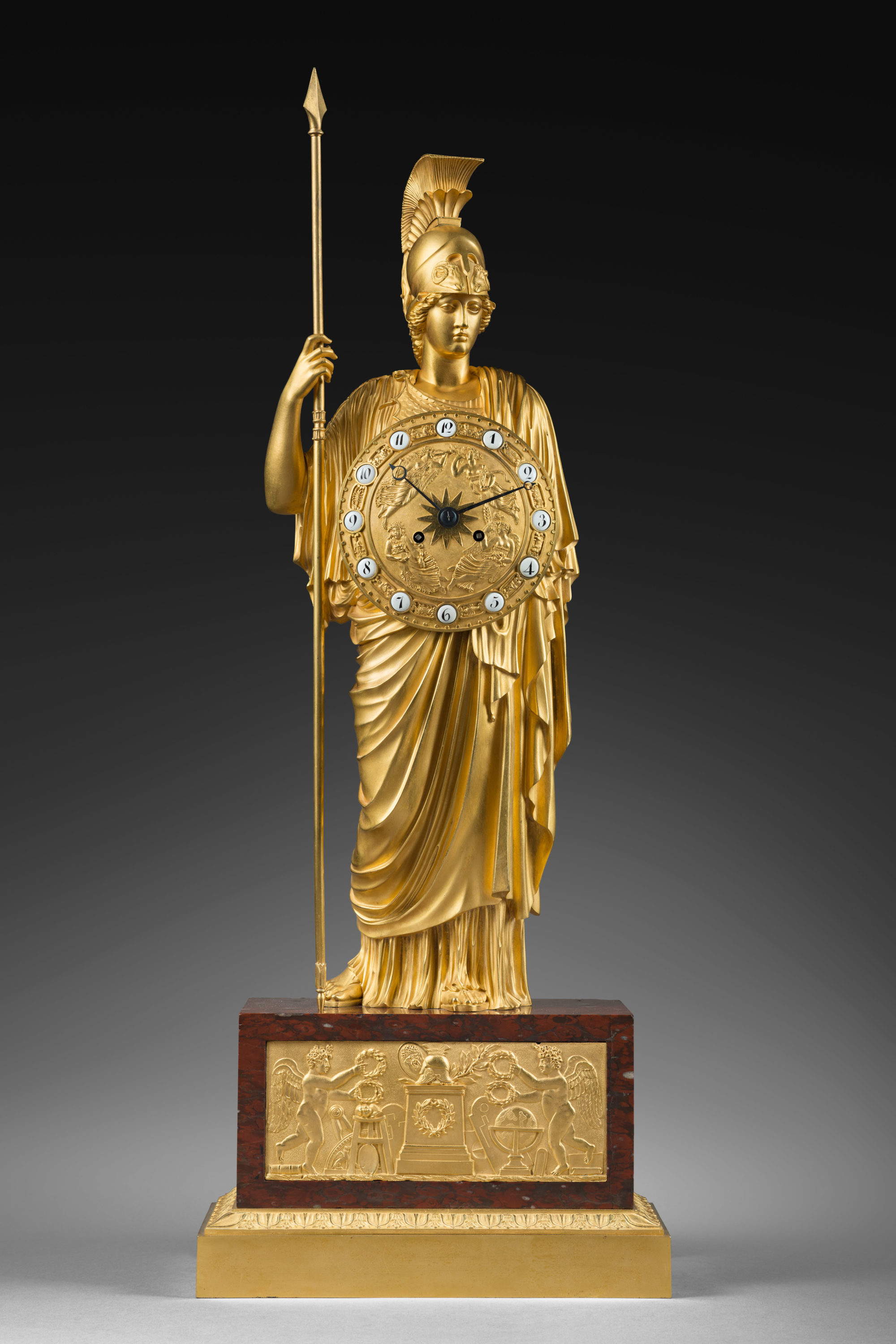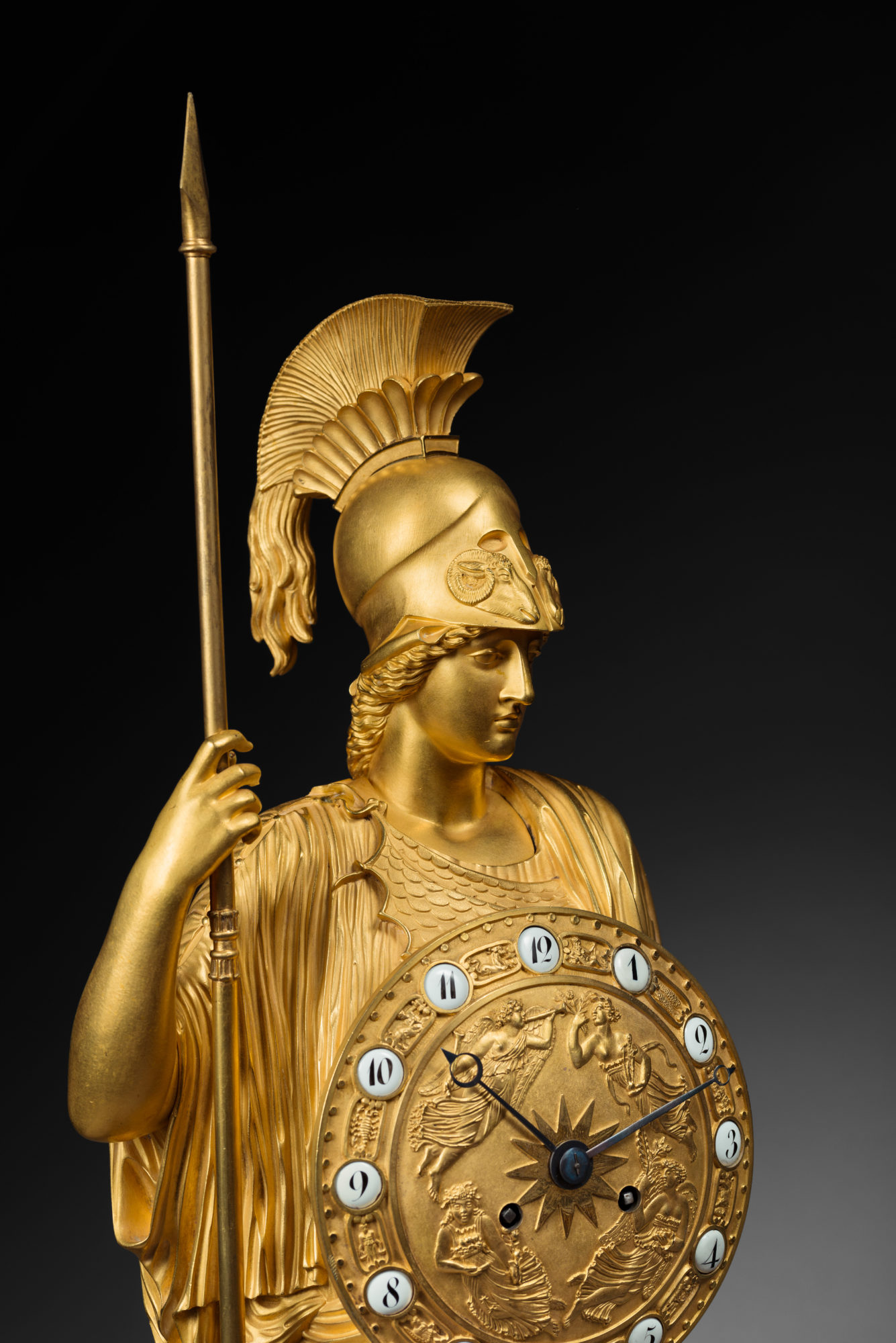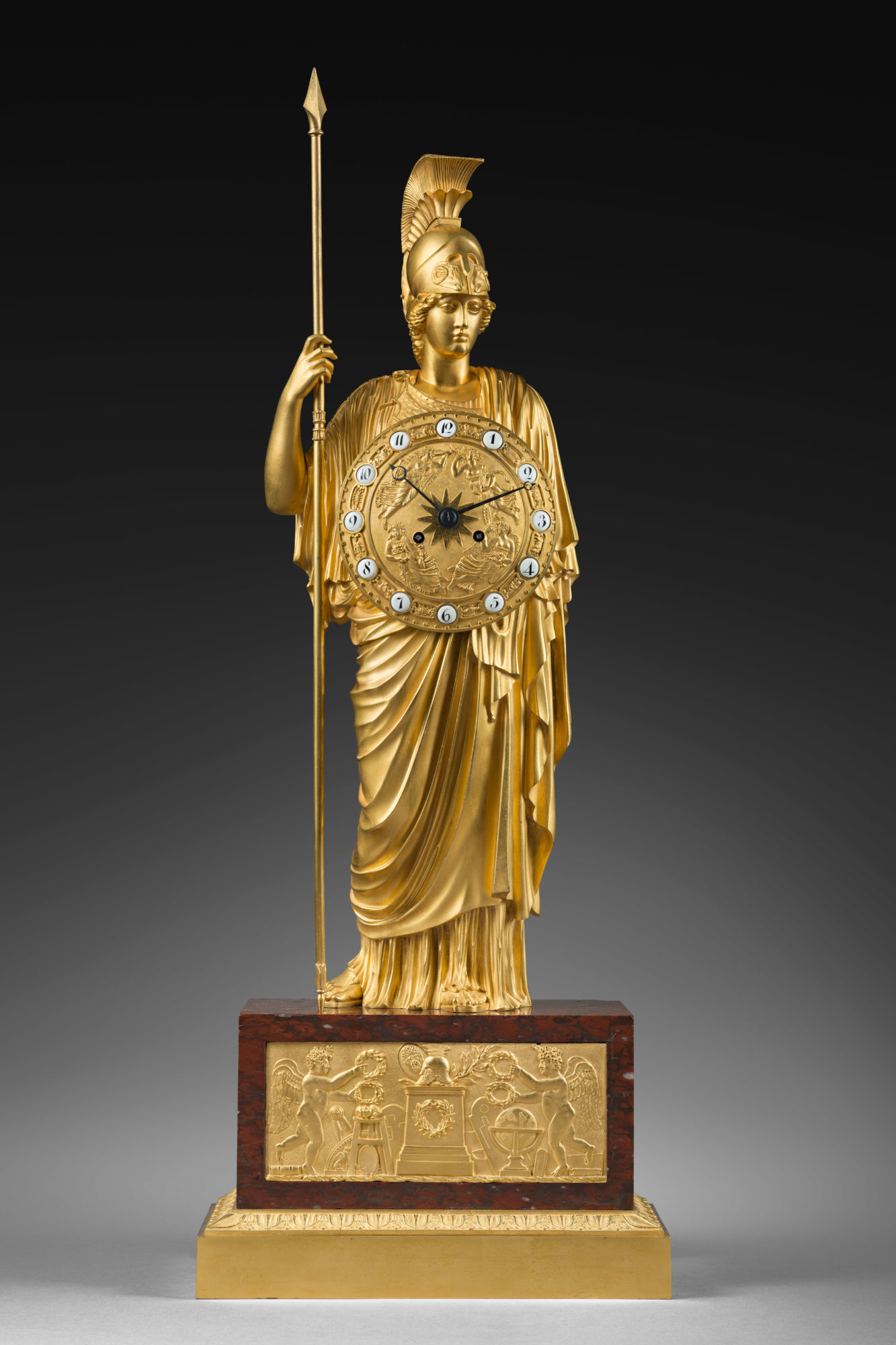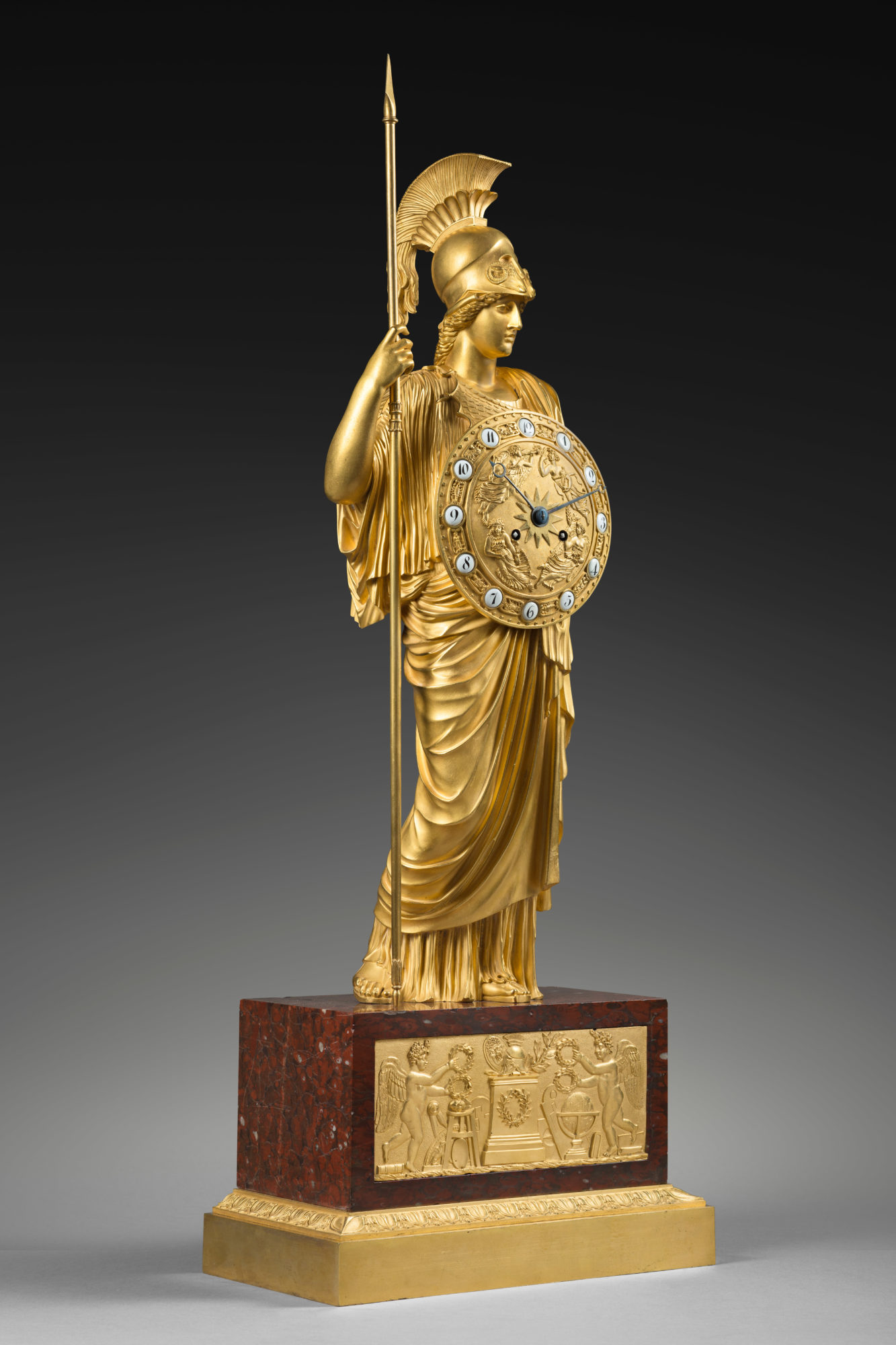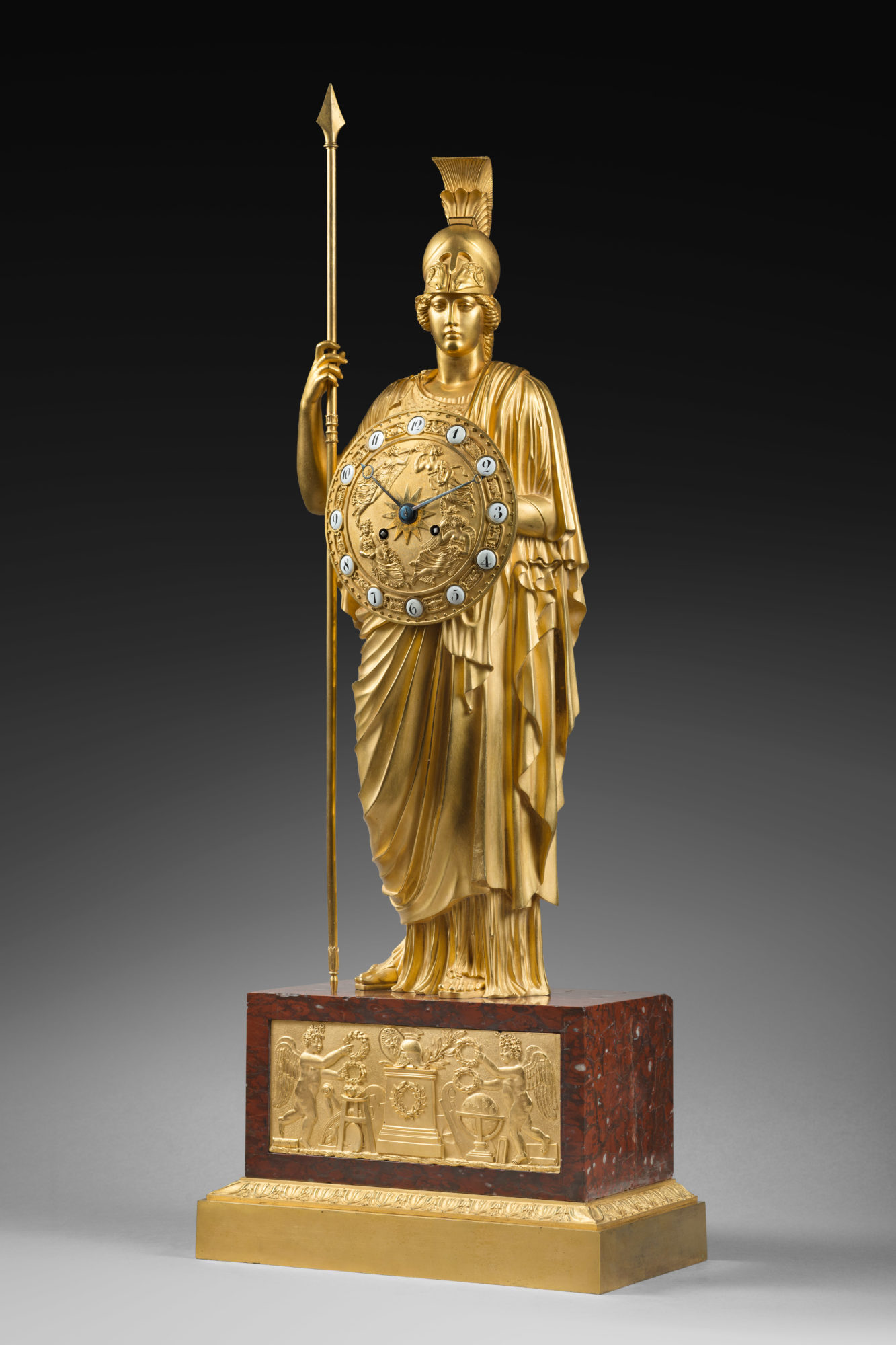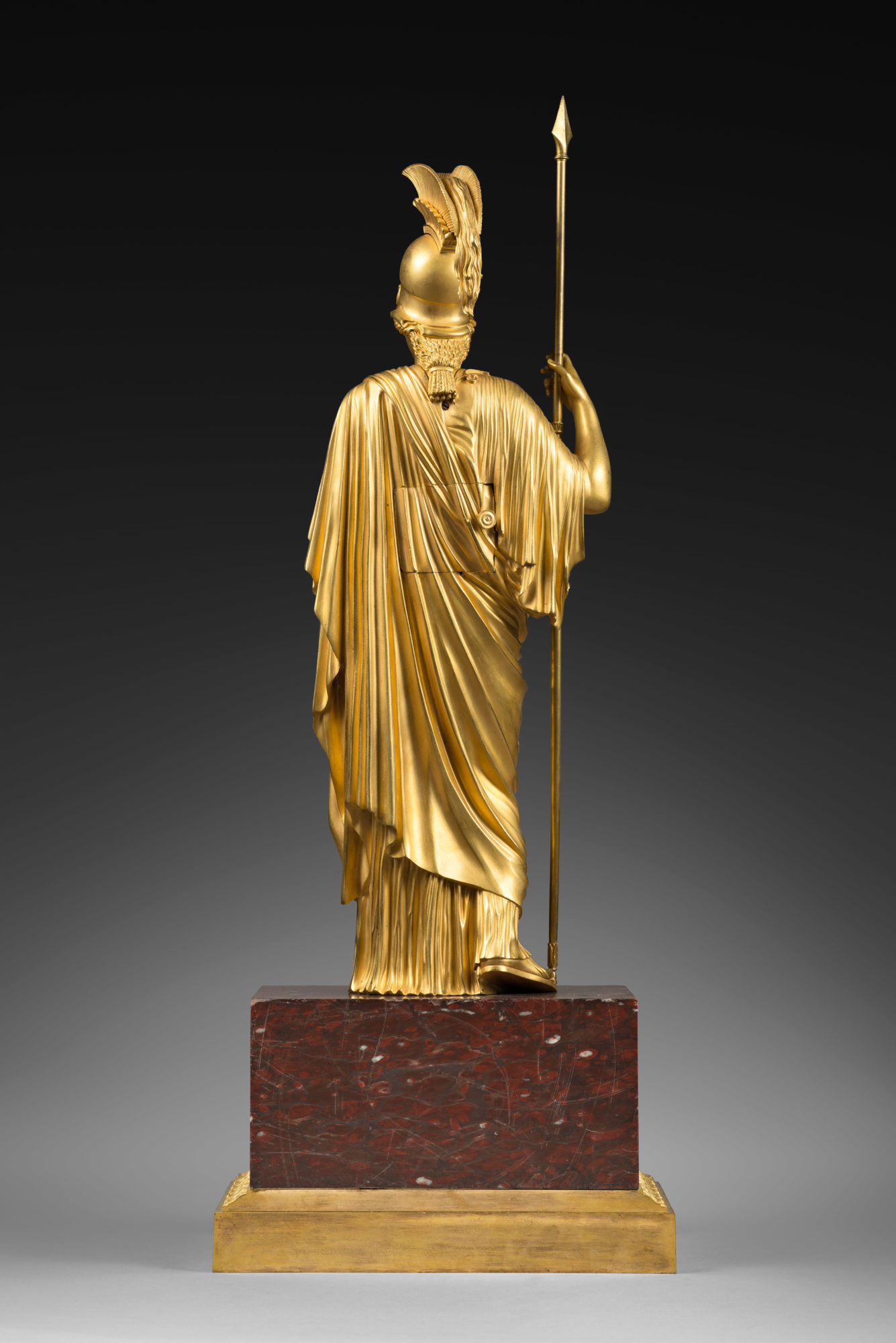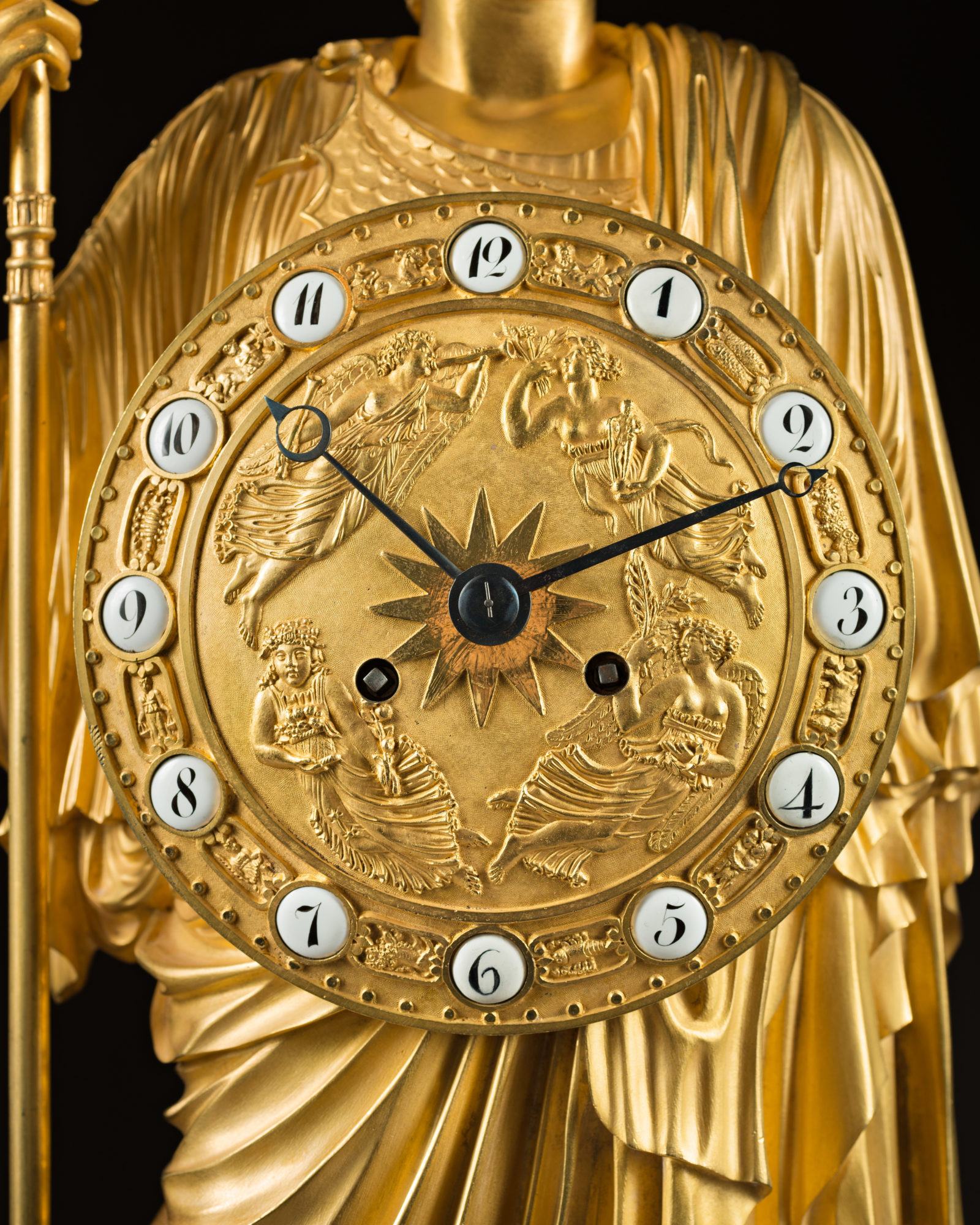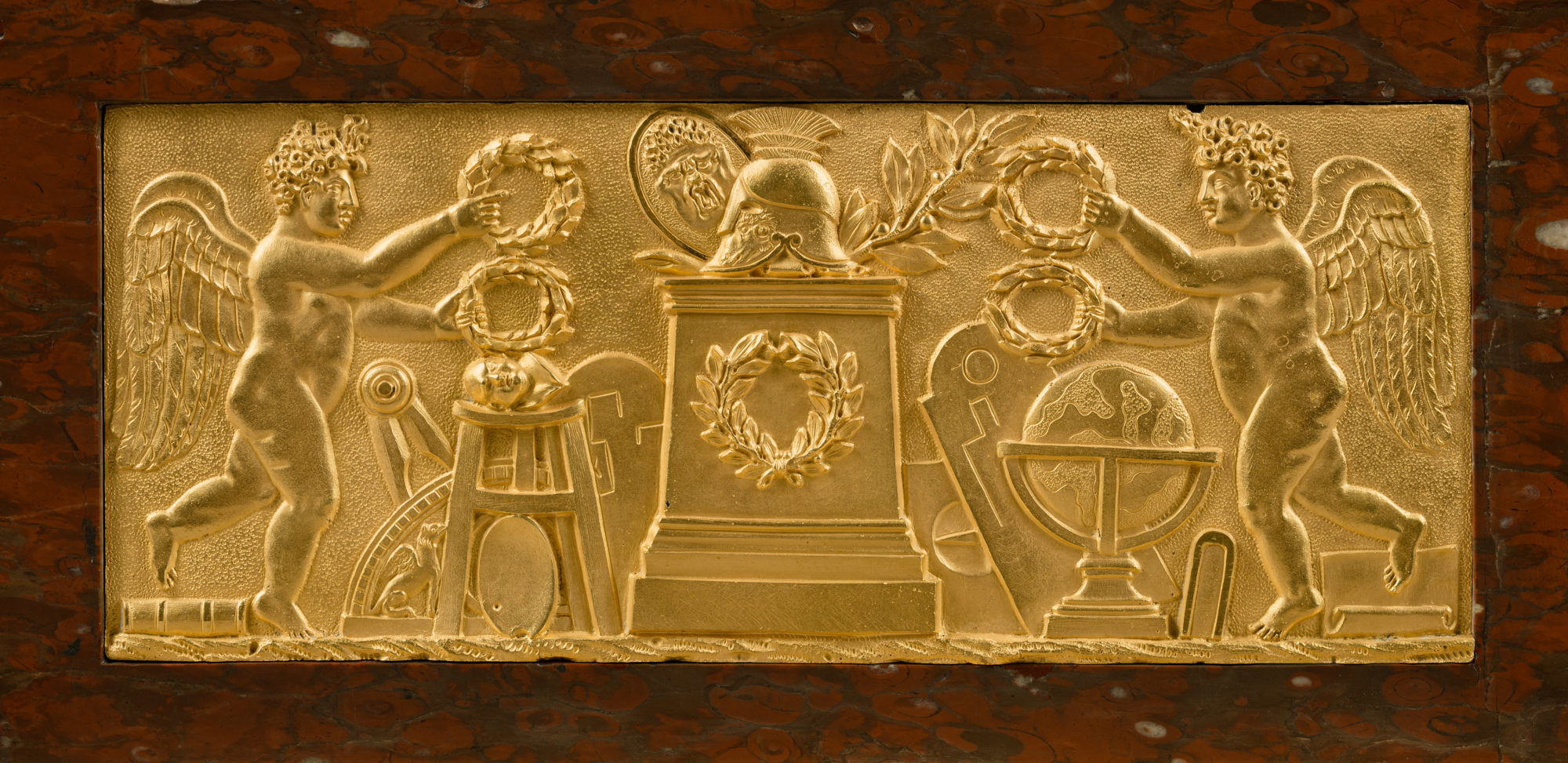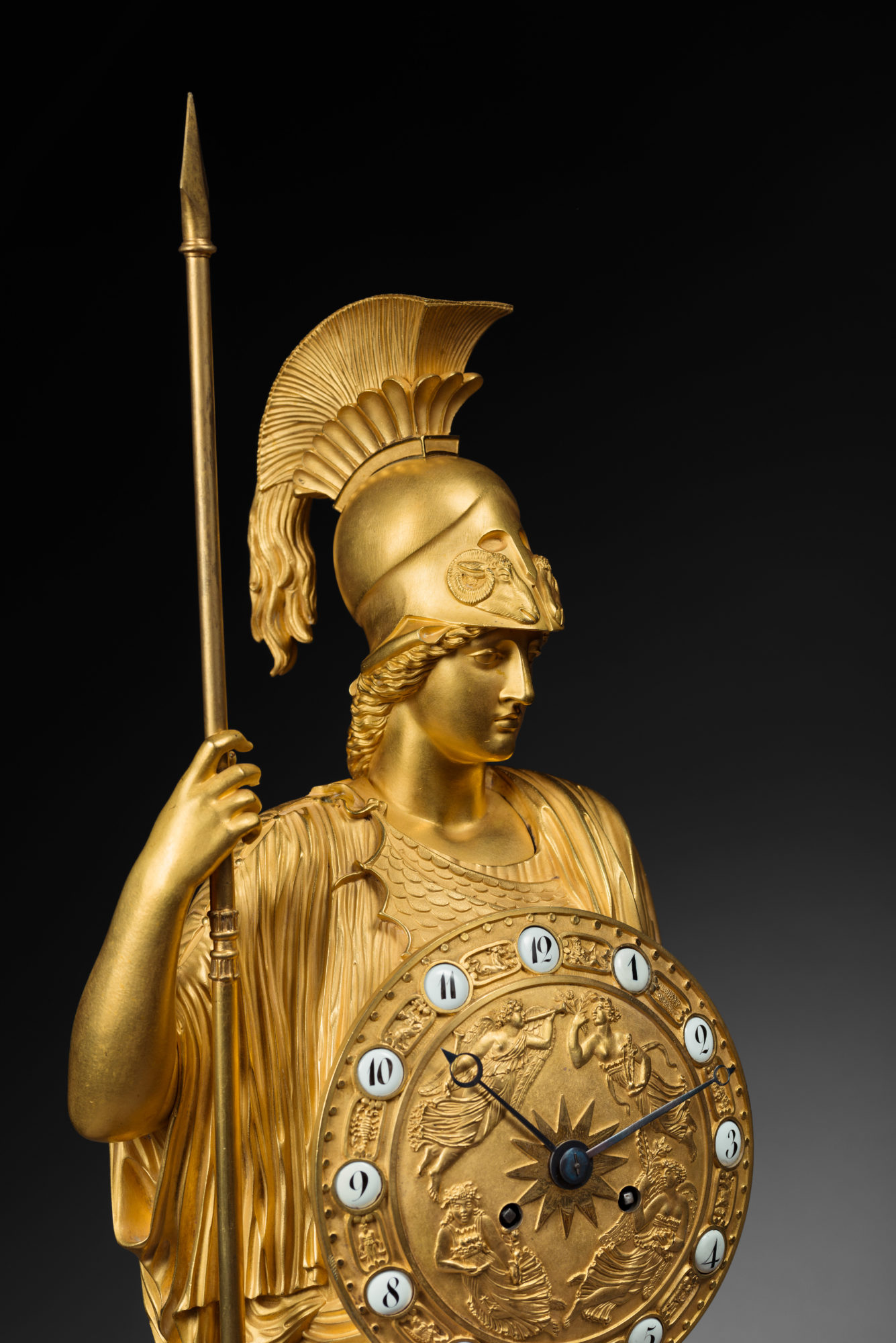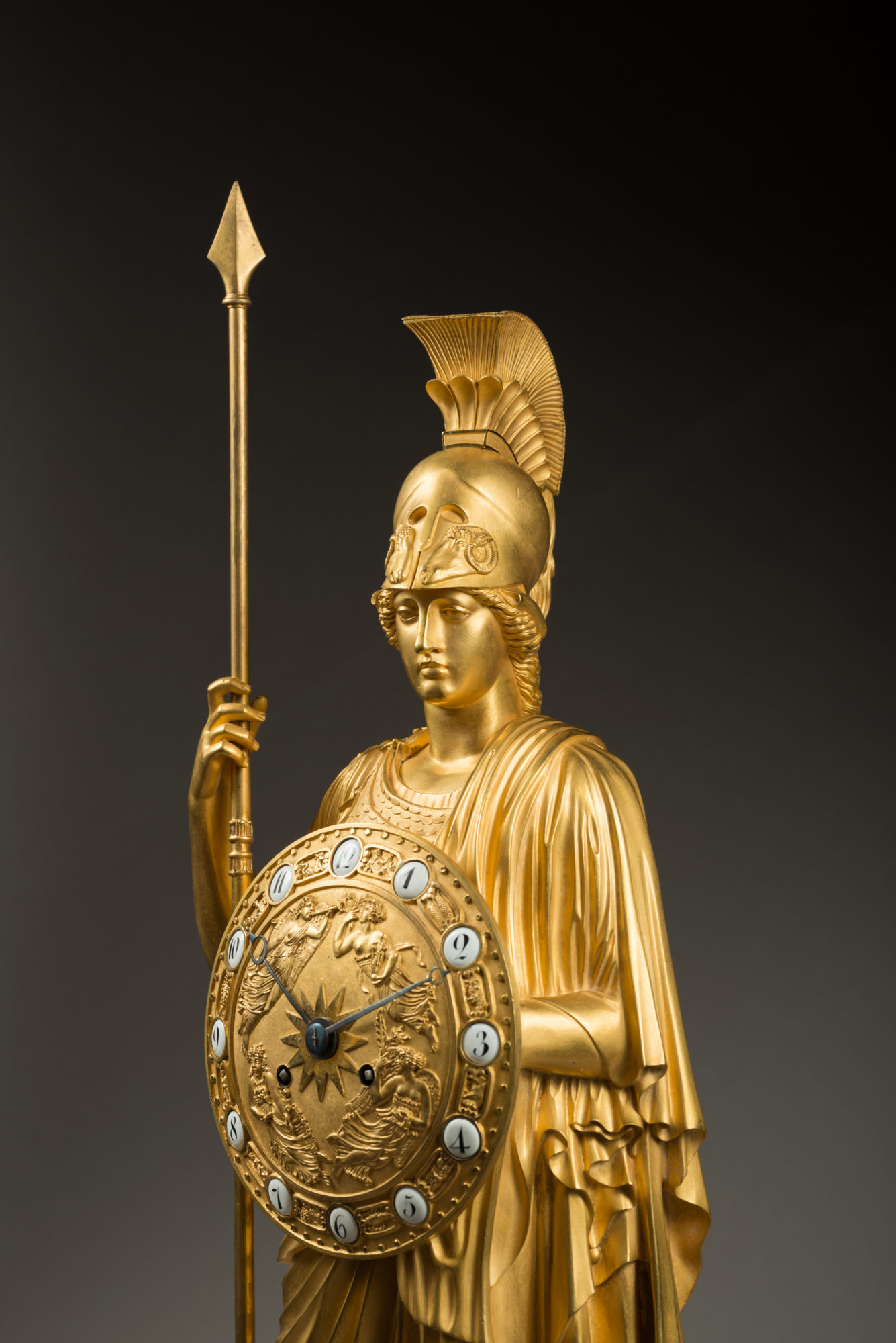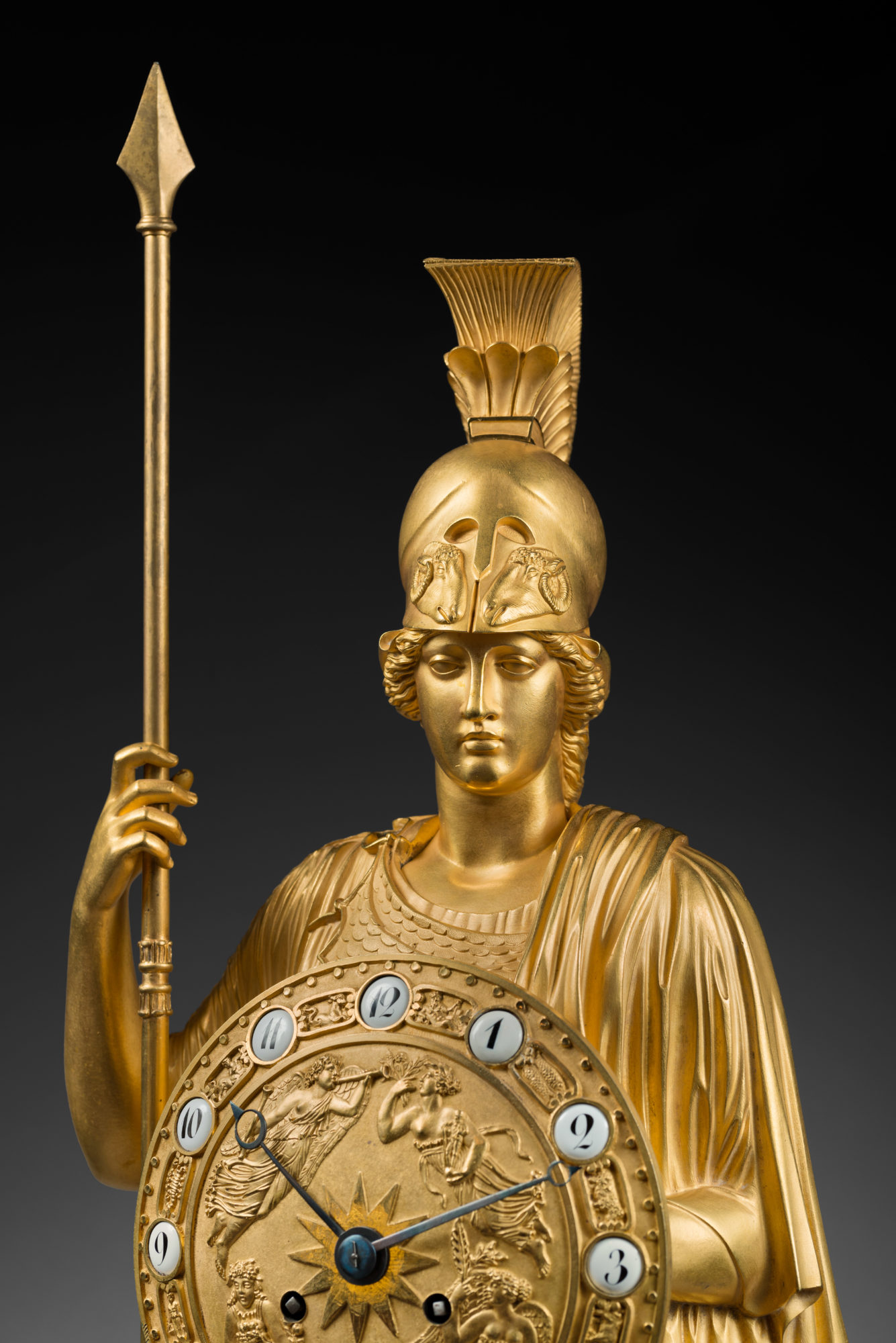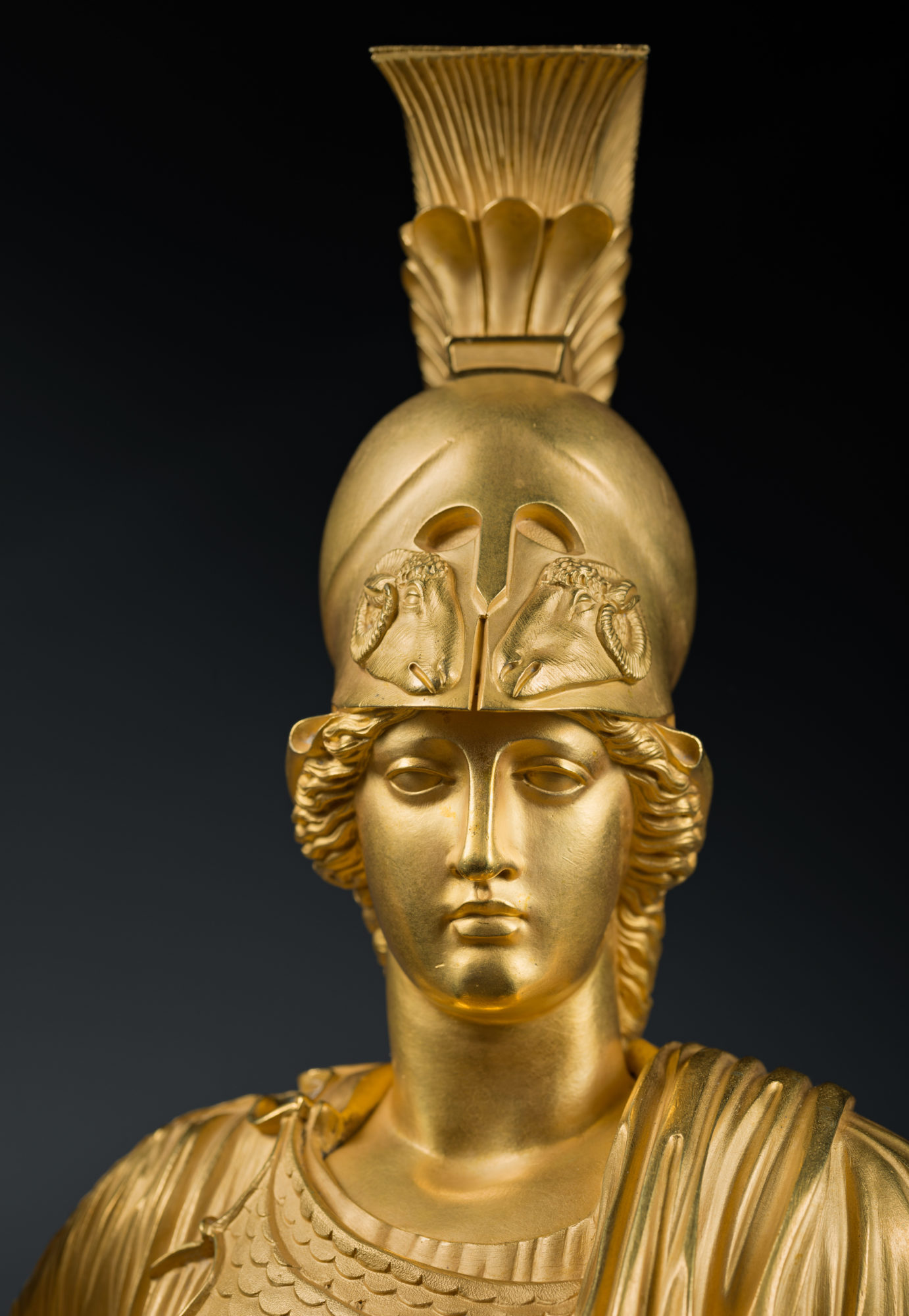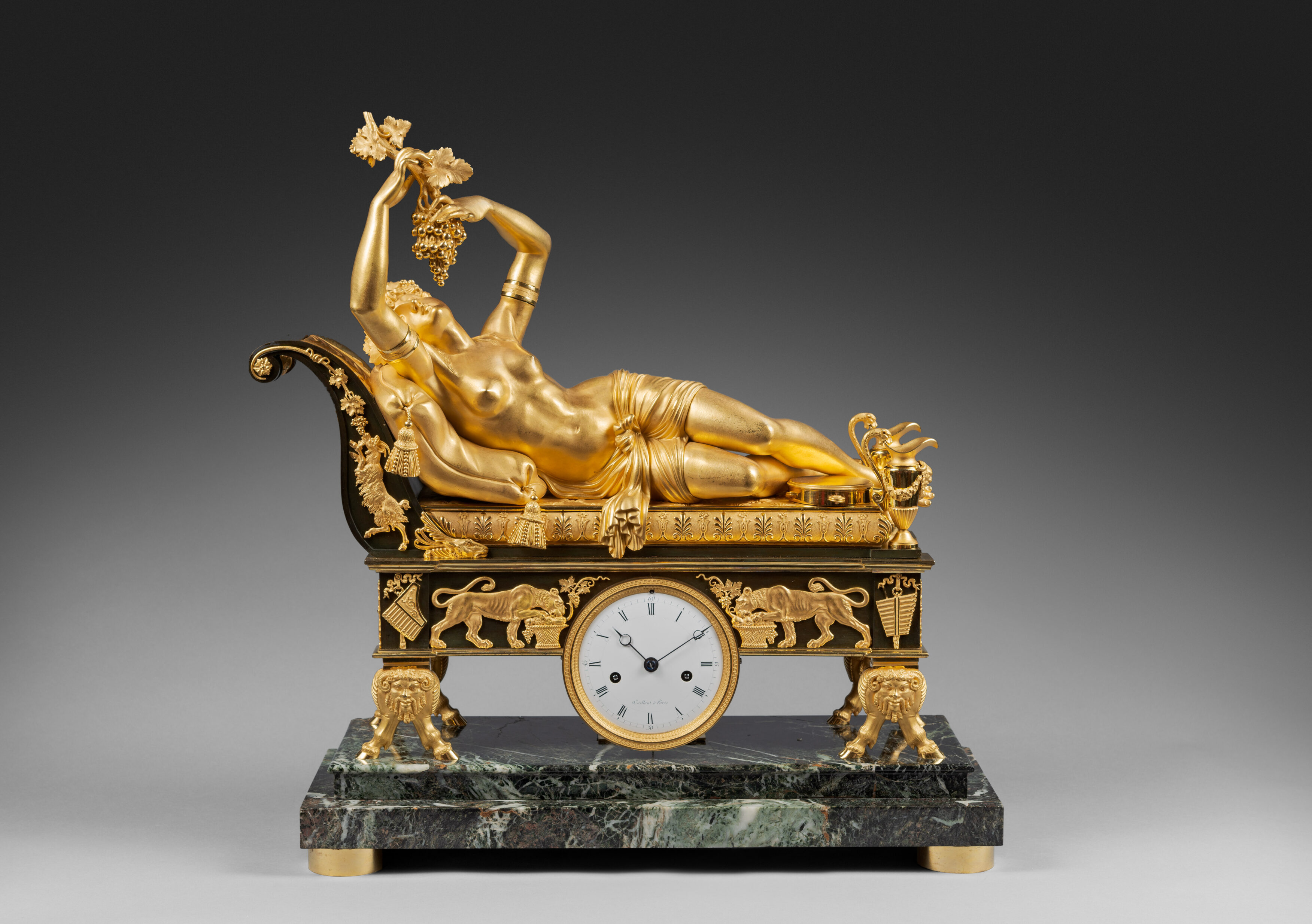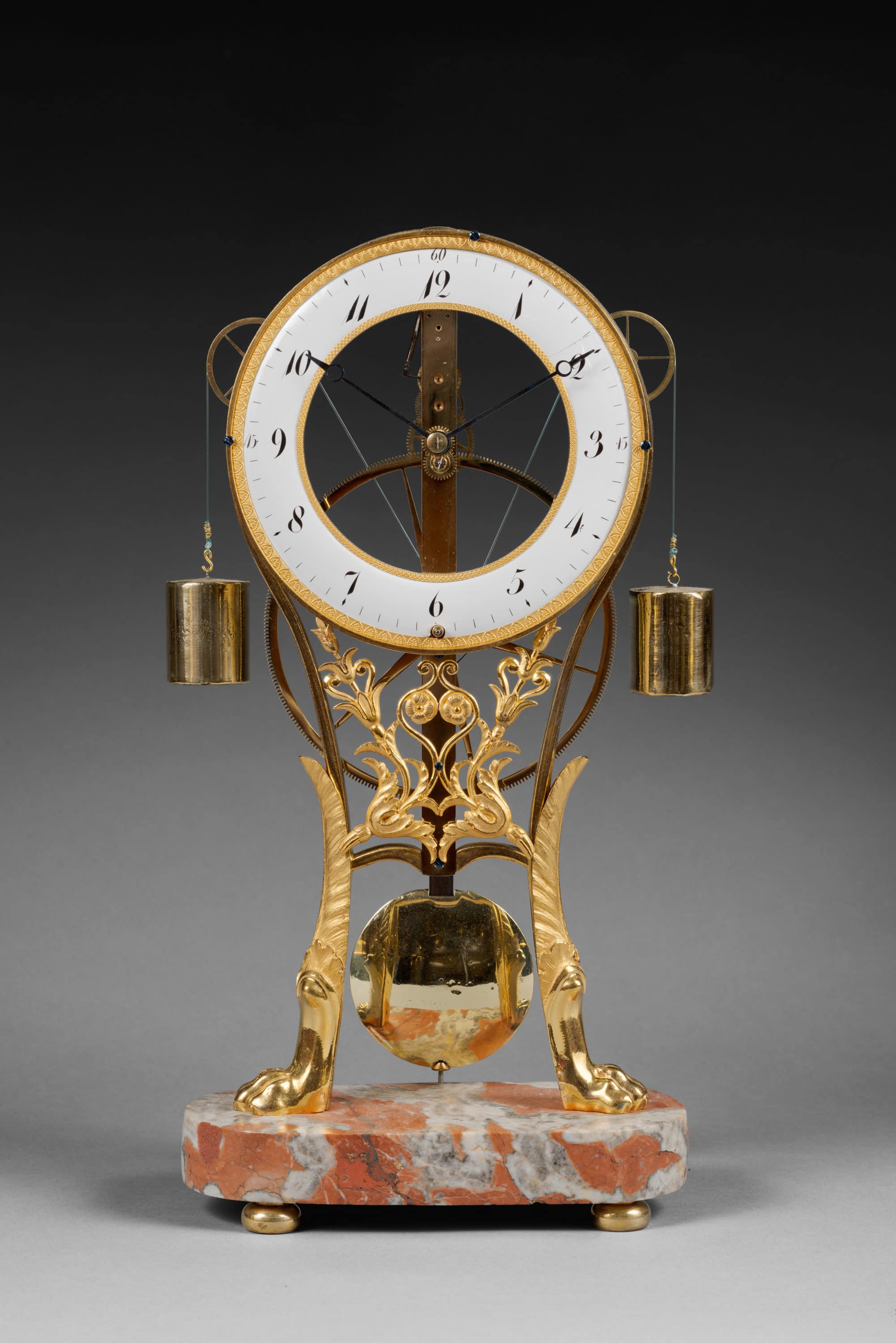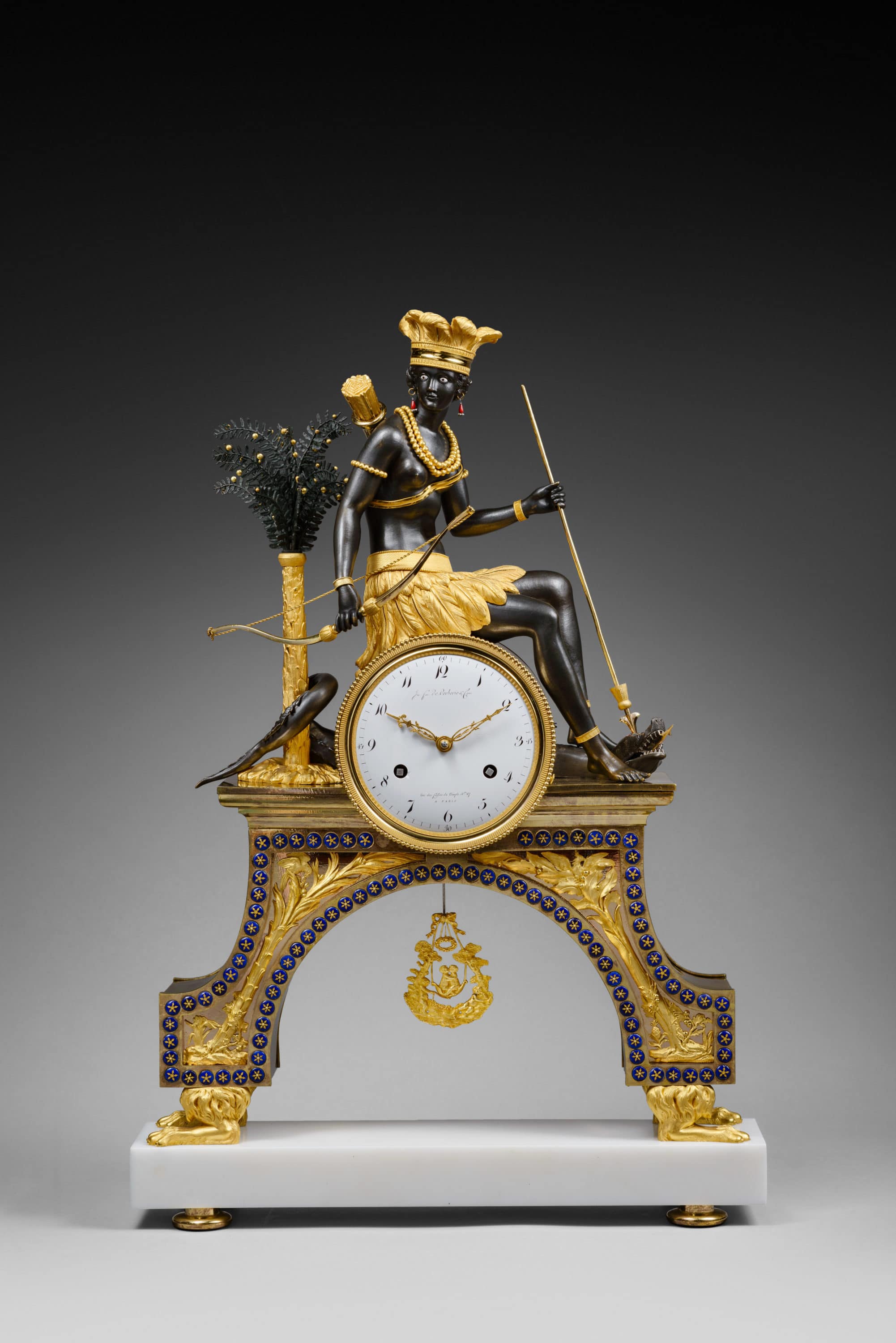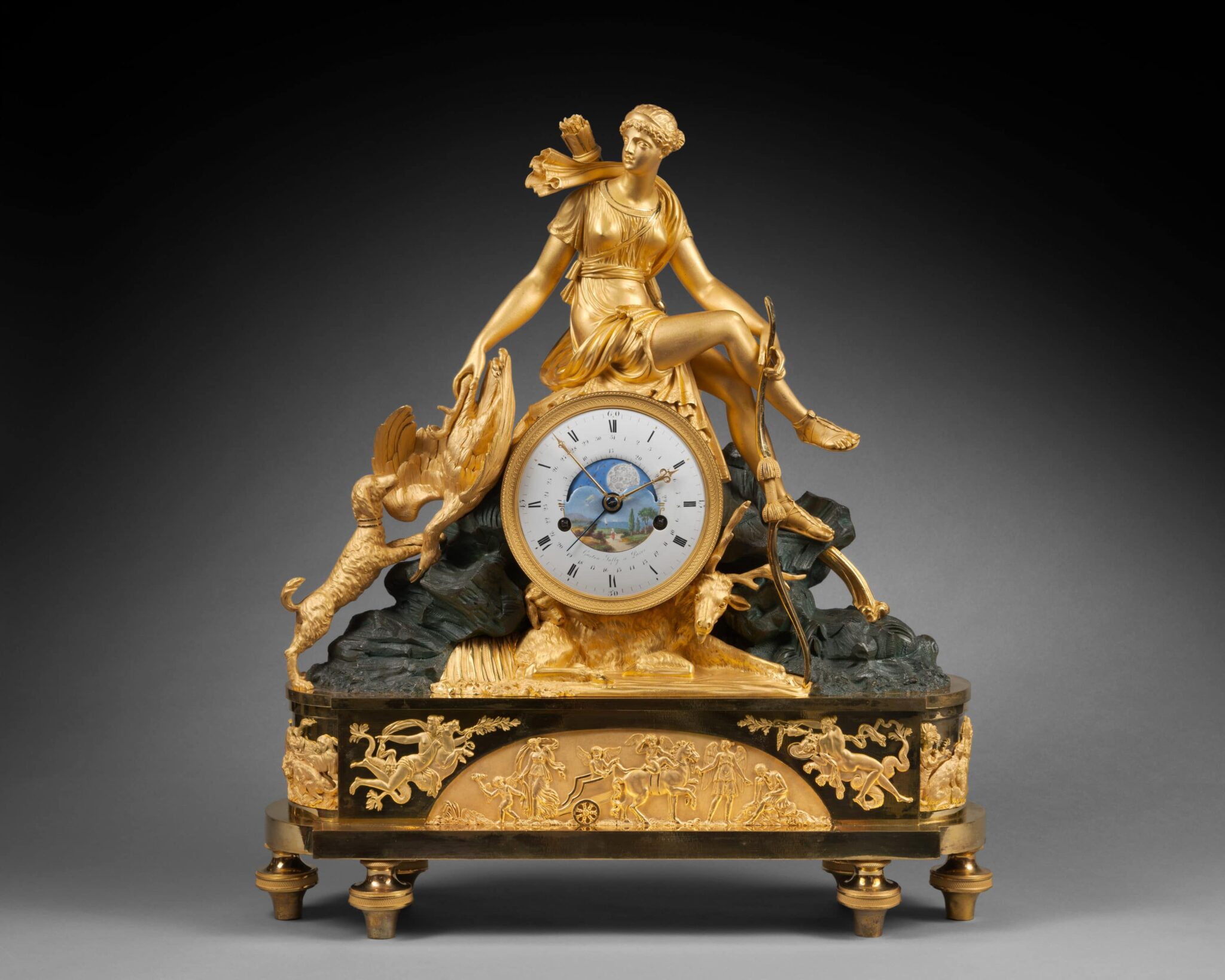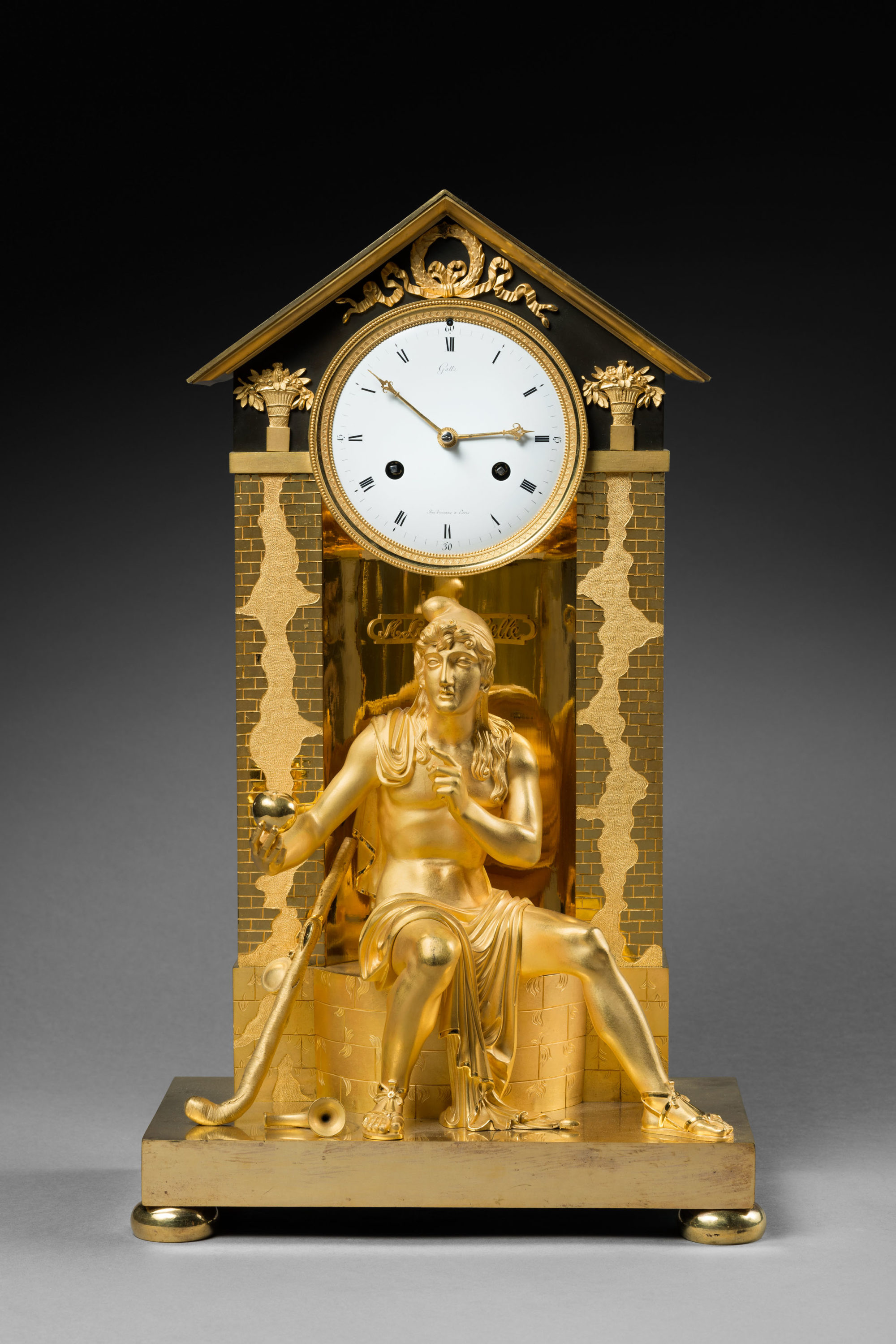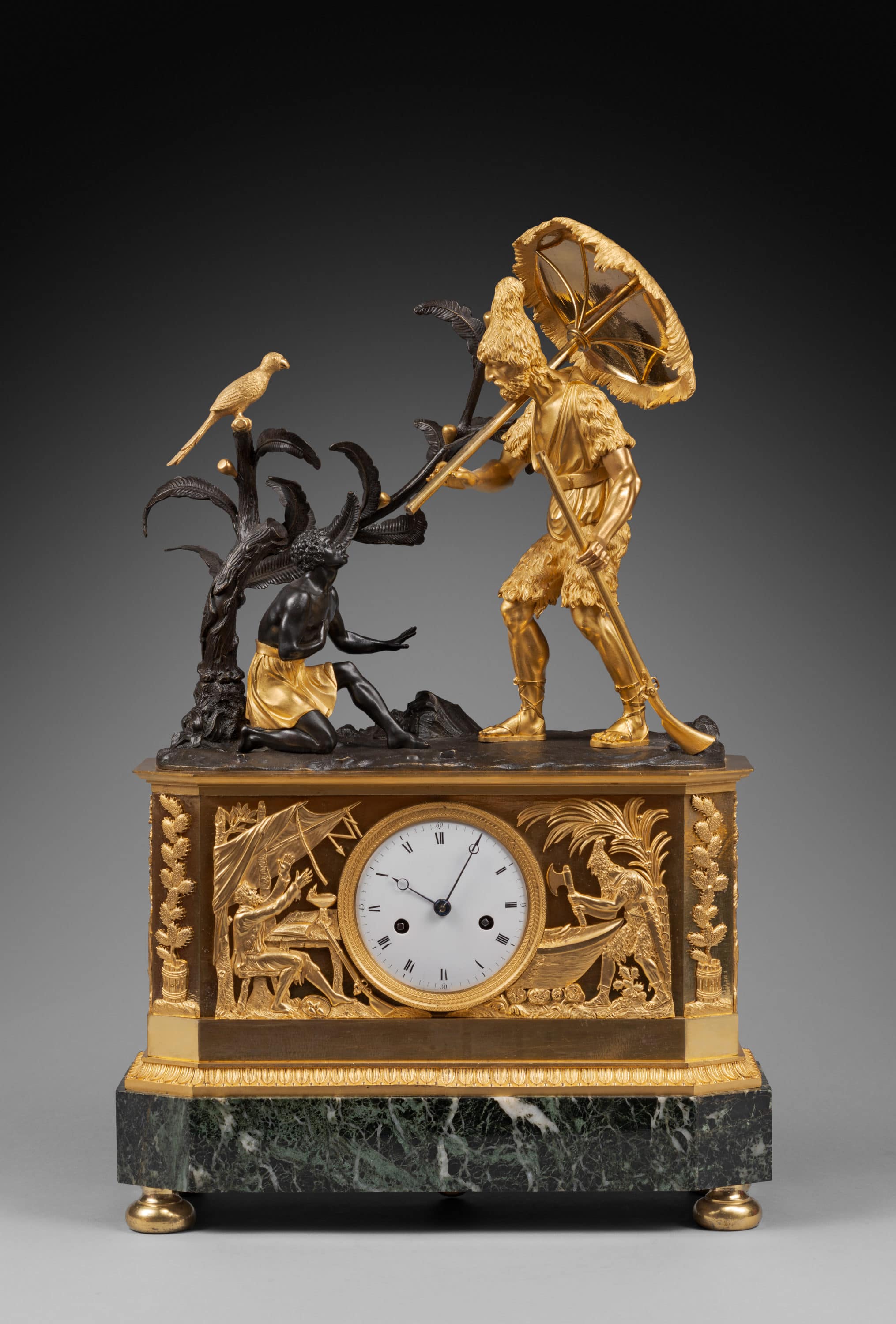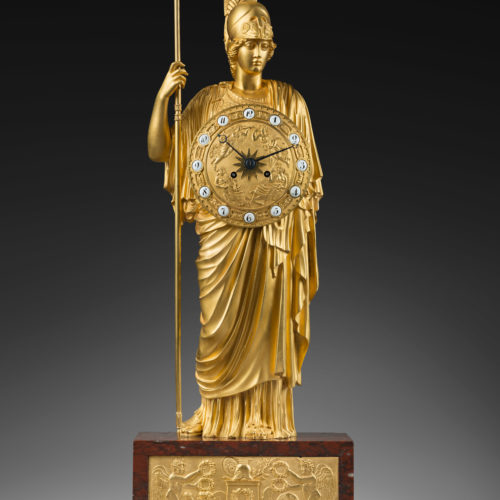A Gilt Bronze and Marble Mantel Clock representing Pallas Athena
A very fine gilt bronze and red marble clock with case attributed to Claude Galle. The round gilt bronze shield-form dial cast with Arabic numerals within circular cartouches, is centred by a sunburst and surrounded by four classical maidens; the Breguet hands are in blued steel. The movement, of two-week duration, with anchor escapement and silk thread suspension, strikes the hours and half an hour on a single bell.
The case depicts the standing figure of Pallas Athena wearing a plumed helmet, as well as a long cloak. She holds a spear with caduceus in her right hand; her left hand brandishes the shield-shaped dial. The rectangular red marble plinth rests upon a gilt bronze base.
Discover our entire collection of antique mantel clocks for sale online or at the gallery.
La Pendulerie is the specialist in fine and rare antique clocks, based in Paris.
Pallas Athena, also known as Minerva, was one of the twelve Olympian gods. She was considered to protect several Greek cities, particularly Athens, which bears her name. The daughter of Jupiter, she sprang fully armed from his head. A virgin goddess who refused to marry, she was also a warrior-goddess. Her many conquests led to her being associated with Victory; she is almost always represented wearing a helmet and brandishing a spear.
A virtually identical clock, entirely in gilt bronze with gilt bronze-mounted porphyry plinth and a plainer spear (today in Stockholm Castle), is illustrated in Hans Ottomeyer and Peter Pröschel, “Vergoldete Bronzen”, 1986, p. 397, pl. 5.18.12. A nearly identical clock in the Spanish Royal collection is illustrated in J. Ramon Colon De Carvajal, “Catalogo De Relojes Del Patrimonio Nacional”, 1987, p. 185, no. 165. A very similar clock, entirely of gilt bronze with gilt bronze mounts to the plinth (today in the Ministry of Foreign Affairs in Paris), is illustrated in Tardy, “Les Plus Belles Pendules Françaises”, 1994, p. 278. A similar clock is illustrated in Elke Niehüser, “Die Französische Bronzeuhr”, 1997, p. 229, pl. 650.
The very fine case may be attributed to Claude Galle (1759-1815), whose son Gérard-Jean Galle (1788-1846) continued to produce the model after his father’s death. One clock was supplied to Stockholm Castle on June 12, 1823. Other examples of this imposing piece may be seen in the Schloss Ehrenburg at Coburg, the Spanish Royal Collection, and the Ministry of Foreign Affairs in Paris.
According to Jean-Dominique Augarde, the first Pallas Athena clock was made in 1815. Although this was the year Claude Galle died, it was some time before his son took over the business, for the bronzier’s widow continued to run the firm until their son Gérard-Jean returned from the army. He continued to produce examples of the present clock until 1825. While here the cast hour and minute numerals are integral to the dial, on later examples the dials have white enamel cartouches for the numerals.
Claude Galle (1759 - 1815)
One of the foremost bronziers and fondeur-ciseleurs of the late Louis XVI and Empire periods, Claude Galle was born at Villepreux near Versailles. He served his apprenticeship in Paris under the fondeur Pierre Foy, and in 1784 married Foy’s daughter. In 1786 he became a maitre-fondeur. After the death of his father-in-law in 1788, Galle took over his workshop, soon turning it into one the finest, and employing approximately 400 craftsmen. Galle moved to Quai de la Monnaie (later Quai de l’Unité), and then in 1805 to 60 Rue Vivienne.
The Garde-Meuble de la Couronne, under the direction of sculptor Jean Hauré from 1786-88, entrusted him with many commissions. Galle collaborated with many excellent artisans, including Pierre-Philippe Thomire, and furnished the majority of the furnishing bronzes for the Château de Fontainebleau during the Empire. He received many other Imperial commissions, among them light fittings, figural clock cases, and vases for the palaces of Saint-Cloud, the Trianons, the Tuileries, Compiègne, and Rambouillet. He supplied several Italian palaces, such as Monte Cavallo, Rome and Stupinigi near Turin.
In spite of his success, and due in part to his generous and lavish lifestyle, as well as to the failure of certain of his clients (such as the Prince Joseph Bonaparte) to pay what they owed, Galle often found himself in financial difficulty. Galle’s business was continued by his son after his death by his son, Gérard-Jean Galle (1788-1846). Today his work may be found in the world’s most important museums and collections, those mentioned above, as well as the Musée National du Château de Malmaison, the Musée Marmottan in Paris, the Museo de Reloges at Jerez de la Frontera, the Residenz in Munich, and the Victoria and Albert Museum in London.
Discover our entire collection of rare clocks on La Pendulerie Paris.
